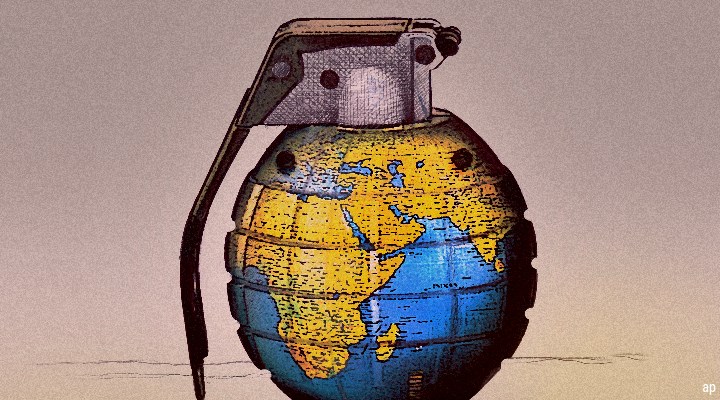
Water scarcity is a global problem and climate change is making it bigger every year. The issue also has environmental, social and economic spillovers that are difficult to manage.
Around two billion people in the world do not have easy access to safely managed drinking water, according to the World Bank. This means water from improved sources such as a pipe, borehole, or protected well that is accessible on-premises, available when needed, and free from contamination. There has been an improvement in the availability of this resource over 20 years; 74% of the world’s population can access safe drinking water, up from 60% in 2000. But, 771 million people cannot access even basic drinking water services and they are mostly concentrated in Sub-Saharan Africa and in rural areas.
Water covers about 71% of the earth's surface, but only 3% of the water on the planet is fresh. Of this 3%, 2.5% is not available because it is represented by glaciers, so only 0.5% is available to satisfy human needs. Beside the issue of the scarcity, there are other problems. The last United Nations World Water Development Report highlights the increase of water demand, especially from emerging countiries, in the coming decades. The report also warns that water stress, created by scarcity and higher demand, will get worse because of the acceleration of freshwater pollution and because of climate change.
The scarcity of water resources also represents a threat to companies, as high consumption or inefficient use can damage their reputation in the eyes of public opinion. “Local communities are increasingly careful to scrutinise companies' water consumption patterns, especially when their operations are located in regions where there is water scarcity”, says Muhammad Koya, senior associate product manager at Sustainalytics. “However, despite the growing importance of water-related risks, reporting on uses still remains very incomplete. In fact, the numbers say that only one company in 10 publishes data relating to its water consumption".
Water Intensity Measured
So, how can we identify the best-in-class companies in water management? Sustainalytics has developed proprietary metrics that guarantee broad coverage of the universe of companies listed on global stock exchanges. In this article we will focus on one of these data points, Water Withdrawal Intensity, calculated as the volume of water used (cubic meters) for every million dollars of revenue produced by the company, which is a useful way to understand the degree of exposure to water risk of each company. Sustainalytics’ analysts found that there is a positive correlation between the Water Intensity score and risk (i.e., all issues related to natural resources that have the potential to cause a significant impact on the company) and the ESG Risk Score Rating, which measures the damage that environmental, social and governance problems could potentially cause to a company.
So, which are the European companies most exposed to this risk? We have to stress that there are sectors, such as utilities, basic materials and energy, which by their nature have greater water demands. On the other end, finance and technology are the sectors which consume less water (Figure 1). For this reason, the aim of our analysis is to identify the best-in-class companies within the different sectors.
Companies Ranked
Based on the portfolio holdings of the Morningstar Europe Large-Mid index, we are looking at sectors with the highest water consumption such as utilities, raw materials and energy. Among the utility stocks, the most efficient in the use of water resources are Spain’s Redeia Corporacion SA, the UK’s National Grid and Severn Trent, and Italian firms Enel and ACEA, while in the last positions we find Enagas, Elia Group, BKW, SSE and Terna Energy.
In the basic materials sector, companies such as IMCD, Azelis Group, Johnson Matthey, Fuchs and Borusan Yatirim Pazarlama have the lowest water intensity, but they have an ESG Risk Rating comparable with the least efficient companies in water management such as: Air Liquide, Solvay, Stora Enso, voestalpine and Yara International. Among energy stocks, companies in the first positions in terms of water intensity are MOL Hungarian Oil and Gas, Saipem, Eni, Orlen and Energean and these also have a better ESG Risk Rating than the most efficient ones.
See the tables below for the best and worst companies in each key sector:







:quality(80)/cloudfront-us-east-1.images.arcpublishing.com/morningstar/JPJHXR5CGSNR4LKQF5ZKLCCVYQ.png)













